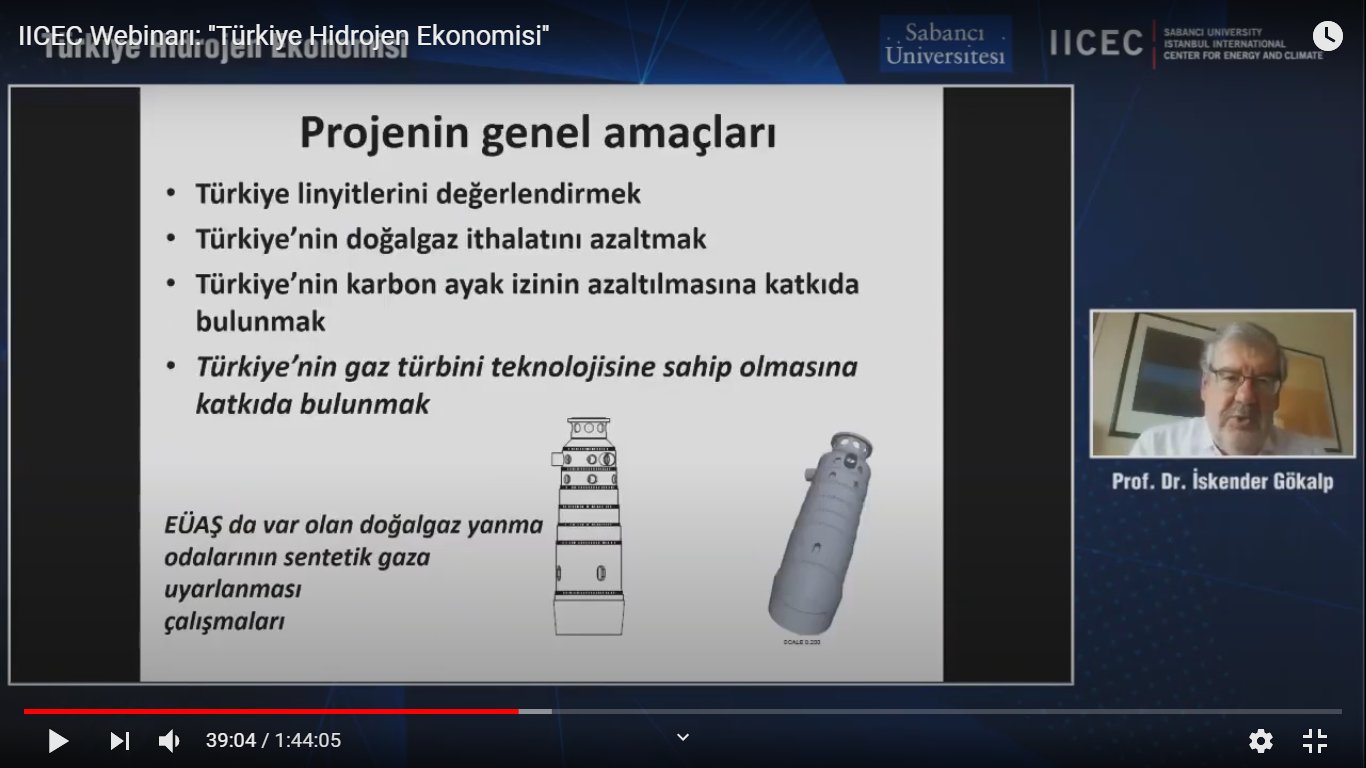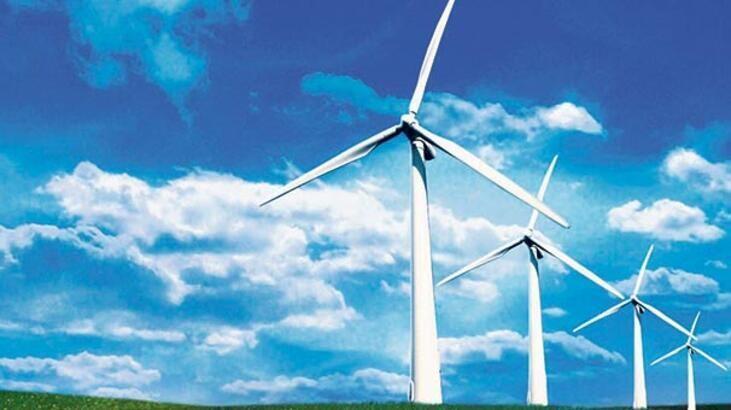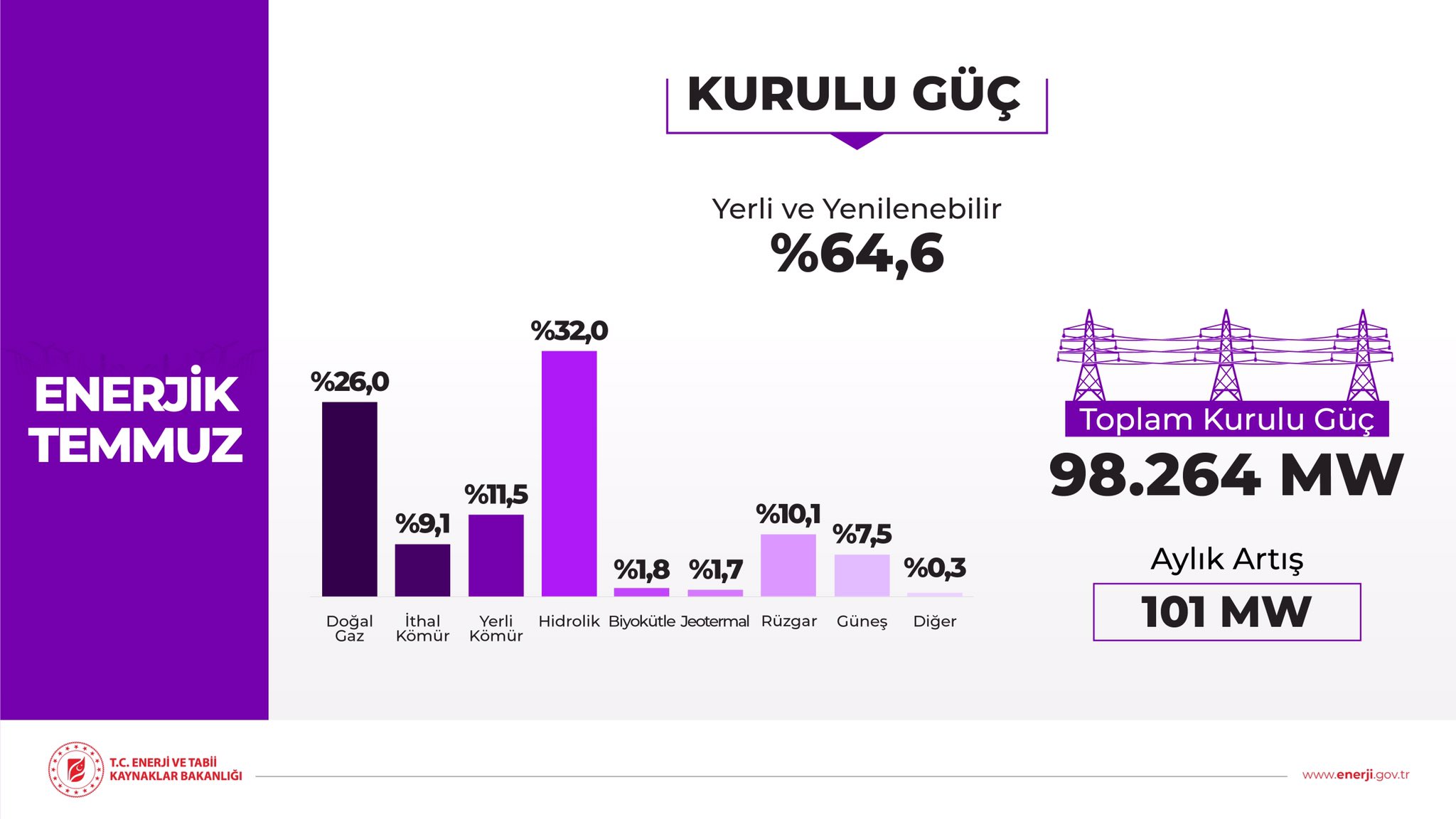Turkey’s wind power capacity exceeds 10,000 MW threshold
ANKARA
Turkey’s installed wind energy capacity reached 10,010 megawatts (MW) as of Aug. 8, according to data Turkey’s Electricity Transmission Corporation (TEİAŞ) released on Aug. 10.
The country’s installed electricity capacity reached 98,800 MW, while clean electricity capacity totaled 51,900 MW during the January to July period of this year.
The 10,000-MW threshold of installed wind energy, although setting a new record high, still falls behind hydroelectricity which leads among Turkey’s clean energy installed power.
Turkey has prioritized the security of energy supply as one of the central pillars of its energy strategy, including efforts to boost investments in the clean energy sector.
Turkey has seen considerable diversification of its energy mix in the past decade, in particular through the growth of renewable electricity generation.
While the share of wind energy in Turkey’s total installed power capacity reached 10 percent, wind energy constituted 19.3 percent of total renewable energy installed power.
In the January to July period of this year,
wind power met around 9 percent of total electricity generation, and it is estimated to replace $1 billion worth of natural gas imports.
Turkey’s wind capacity and equipment production has grown to the extent that it now ranks as one of the 10 biggest markets globally.
Growth in this sector has already crowned Turkey as the fifth-biggest equipment producer in Europe last year. And this growth has seen Turkey expand its exports to 45 countries on six continents.
Of the 77 wind equipment producer companies in Turkey, 70 percent generate their revenues from equipment exports.
WindEurope, the association that advocates for wind energy in Europe and worldwide, said that Turkey ranked as the fifth-biggest wind power investor in Europe in 2020 with 1.6 billion euros.
The highest wind energy capacity on a provincial basis was in the Aegean province of İzmir province with approximately 1,700 MW, followed by the northwestern province of Balıkesir with 1,300 MW, the Marmara province of Çanakkale with approximately 850 MW, the western province of Manisa with 750 MW and Istanbul with 420 MW.
Turkey’s dependence on oil and natural gas imports increases its current account balance and financial vulnerability, Industry and Technology Minister Mustafa Varank said on Aug. 9.
“Renewable energy is an important alternative particularly for developing countries to decrease external dependency and accelerate industrialization. It has also critical importance for sustainability with low costs and environmental advantages,” Varank said during an energy conference organized by the Turkish Academy of Sciences (TÜBA).
Turkey has issued more than 7,000 investment incentive certificates for renewable energy projects since 2012, he added.
Turkey generated 12 percent of its electricity from wind and solar in 2020 relative to the world average of 9.4 percent, according to London-based think-tank Ember. Wind accounted for 2 percent of total electricity generation in 2011 and reached 9 percent last year. Solar, which had no share in electricity generation 10 years ago, met 3 percent of the total electricity output in 2020.
Last year, the share of hydropower plants in total electricity generation was 25.6 percent, while the share for natural gas power plants was 22.7 percent. Imported coal and lignite power plants accounted for 34.8 percent of total generation last year.
Turkey imports around 45 billion cubic meters of natural per year, paying approximately $12 billion to pipeline exporters Russia, Azerbaijan and İran, as well as LNG suppliers including Qatar, Nigeria, Algeria and the United States. Nearly a third of the country’s gas needs are met with LNG supplies.
Turkey’s installed wind energy capacity reached 10,010 megawatts (MW) as of Aug. 8, according to data Turkey’s Electricity Transmission Corporation (TEİAŞ) released on Aug. 10.

www.hurriyetdailynews.com



















